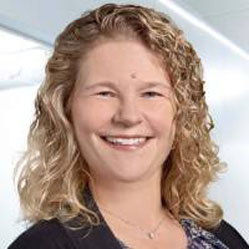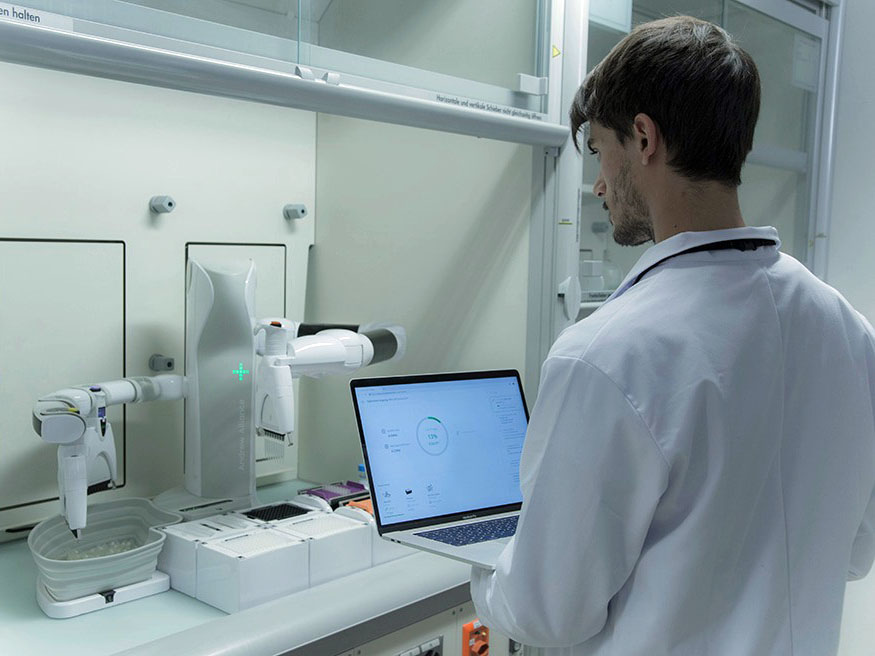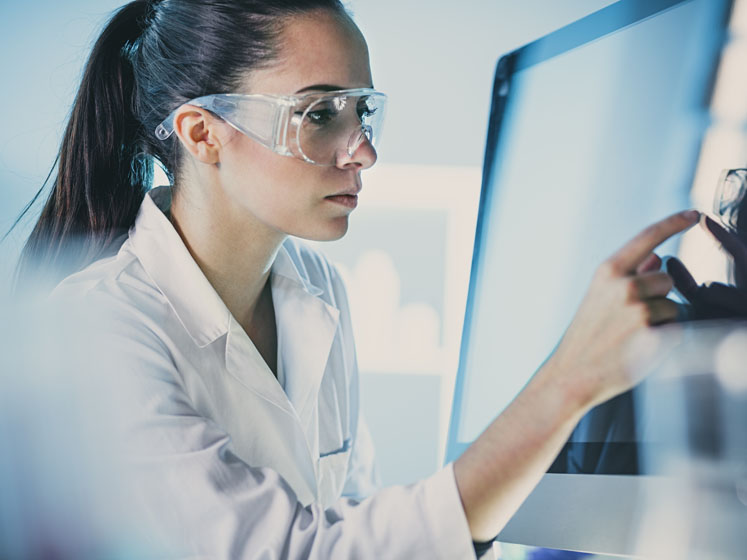Chatting first about the nebulous concept of the “new normal,” I ask how the pandemic has affected Waters in the last 12–18 months, what they’ve learnt from the experience and any changes they plan to implement in the future.
Introducing herself, Diane tells me she manages the scientific operations team at Waters Corporation: “We’re a group of 80 chemists based on three continents — Massachusetts in the US, Wilmslow in the UK and we also have a lab in Singapore — so, given the recent chaos, it’s been an incredibly disruptive time for us."
"Of course, traditionally, for anyone based in a laboratory or manufacturing function, the expectation has always been that you’re on site, in the lab, 5 days a week, working an 8-hour day. But, when the pandemic first hit and because we really didn’t know how it was transmitted and how serious it was, we sent everybody home.”
“However, it only took us a couple of weeks to realise that, like many of our customers, we needed to keep the business going and couldn’t completely shut down forever. From a medical device, pharmaceutical QA/QC standpoint, we’re a critical supplier, so we knew that we had to get back into the buildings.”
“As such, our cross-functional teams sat down to work out a solution in terms of the number of people we could accommodate at one time, social distancing requirements, a shift rota and the fundamental logistics of getting back up to speed. Then we had to address issues such as getting our samples prepared, running the systems and accessing the data."

Diane Diehl
The pandemic forced the entire team, independent of geography, experience and/or education, to think more carefully, more consciously about how they operated. What do I do from the minute I walk in the door to the minute I leave? What does my day look like? Because someone else is waiting to take my spot in the lab, I have to be more efficient, more effective. It made us think a lot about our day-to-day operations.”
“We also discovered that scientists, perhaps unsurprisingly, get so focused on their own set of experiments and equipment, they don’t really pay attention to anyone else or what’s going on around them."
"Now, though, we’re seeing a lot more internal collaboration. Oh, my mobile phase is running dry, can you top it off? I need to prep samples. I forgot to take the plasma out of the freezer, can you take a bottle out and put it on this bench? My computer needs a reboot, could you help? Internally, we’ve become a lot more collaborative.”
“The same is true from a customer standpoint. We’ve been able to have cross-functional conversations with customers who’ve been working on coronavirus and other vaccines."
"Sure, COVID has been in the news a lot, but there’s a whole host of other research going on in terms of other therapies, medicines, antivirals, etc. Having said that, several customers are increasingly using some of our tools and solutions to research long-COVID as well.”
“So, there has been more external co-operation, a higher level of customer-to-customer communication and much more internal collaboration at Waters. Customers are asking for help, we’re experiencing a lot less bureaucracy — such as signing an NDA — and projects are being completed faster!"
It’s a very different working environment and it’s something we need to encourage and maintain as we move forward into the new normal … whatever that turns out to be.” Many of the business resiliency practices that were introduced to weather the ongoing storm can — and should — remain in place even after widespread vaccination, Diane concludes.
Operational excellence
Given the new paradigm, I ask Diane whether the transition to more streamlined lab operations was something that was already in the pipeline for Waters, an idea that was expedited by the pandemic or the working equivalent of a knee-jerk reaction.

“It was something that was fast-tracked by the pandemic,” she tells me: “Previously, we’d focused on things like instrument uptime, when should we do the performance maintenance kits, whether we were using all of our equipment effectively and how much we were spending on supplies."
"From an efficiency standpoint, it wasn’t until the pandemic struck that we realised that, if you can only be in the building 4 hours a day, 2–3 days a week, something had to change.”
I also suggest that, as a global supplier and user, the much-lamented shortage of lab consumables must have had a significant impact on operations.
“We’ve been really fortunate,” she explains, “we had enough of just about everything in-house and haven’t run out of anything. There have been some minor delays … but nothing catastrophic."
"Right now, it’s pipette tips that are starting to cause a problem. We’re having to scrounge around and search through every drawer and cabinet to make sure we’ve got enough. Hopefully, we won’t need to start washing and reusing them, which would certainly make life a lot more difficult.”
A new way of thinking
Beyond the scarcity of pipette tips, I’m keen to know what other issues Waters’ customers have been dealing with and whether they’ve been asking for different services, if they’re facing different problems or even changing their perspective.
“Even through the pandemic, the core Waters business of liquid chromatography–mass spectrometry (LCMS) has been pretty steady,” says Diane: “Researchers, especially in the life sciences, had to work! They couldn’t stop updating and upgrading their equipment."
"As a result, there are two areas that have come to the fore. One is automation, which ties in with our recent acquisition of Andrew Alliance and our ability to deliver a mid-tier robot that’s very much in demand. With customers only being in the lab for no more that 4 hours, there’s a lot of discussion about hardware, automation and maintaining a high level of sample throughput.”
“Secondly, there’s the whole digital network issue and the online use of CDS or LIMS, data management, etc., for which we’ve recently signed an agreement with TetraScience."
"What the pandemic has done is accelerated our approach to digital data management; but, whether we’re talking about a lights-out lab or a lab of the future, there will always be a human involved. To what degree, I don’t yet know, but the pandemic has definitely accelerated these discussions.”

“And, again, it’s not just with our customers, but internally too. Fortunately, we moved over to Microsoft 365 and Microsoft Teams before the lockdowns kicked in and I honestly don’t know what we would have done to keep the business going without those platforms."
"No matter what industry we work in, there’s definitely a move towards a digital-first mindset, augmented with automation, that could and should ensure that collaboration remains at the forefront of scientific discovery.”
Whether life in the cloud will revolutionise how we think remains to be seen, but I wanted to return to Diane’s comment about the absolute necessity of having people in the lab. Is removing human life from next-generation laboratories a step too far?
“I don’t see that happening any time soon,” Diane reassures me: “We’ve been hearing about it for years in the car industry, for example, but even in highly automated factories, there are still human beings to fix issues, make decisions, etc."
We’re a long way away from staff-free robotic environments. It’s also an emotive topic: when you talk about removing humans, you’re talking about people and their jobs."
"What we should be addressing is added-value activities such as minimising errors, ensuring safety and reducing the need for workers to do menial tasks."
The better use of our brains to solve problems and analyse data is the discussion we should be having, not eliminating humans from the lab. Particularly at Waters, where there’s such a wealth of collective expertise among our scientists, to put that to the back burner would be a disservice to the industry.”




